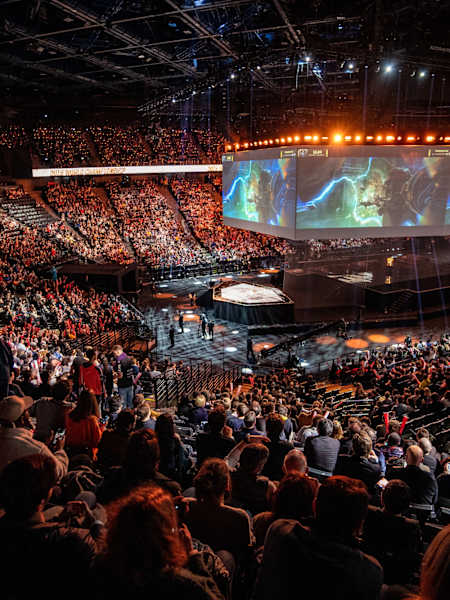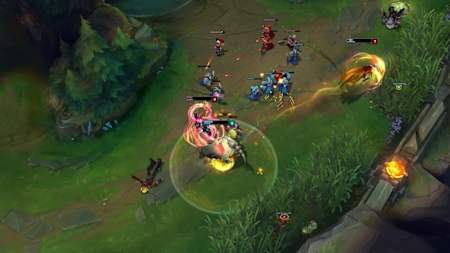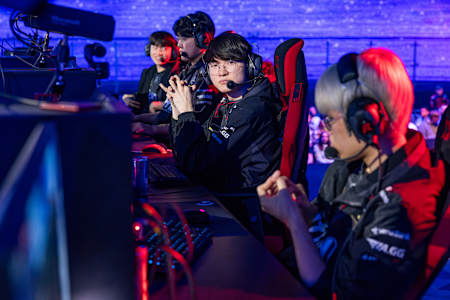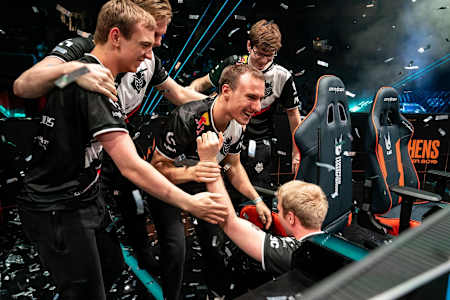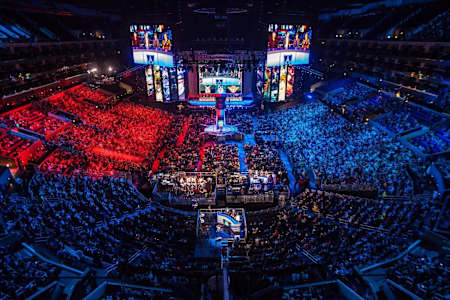Gaming
League of Legends has reached incredible levels of longevity and popularity as a free-to-play game that masterfully made the Multiplayer Online Battle Arenas (MOBA) genre more accessible while still maintaining the complex skill ceiling hardcore gamers yearn for.
We’ve looked at the history of Counter-Strike so now is the time to walk through the incredible story of League of Legends. A story that’s spanned well over a decade, has given birth to one of the biggest esports ever and is still going strong today.
01
A new MOBA: League of Legends enters the battlefield
League of Legends has been played by millions across the globe and for many gamers, it was their first experience of Multiplayer Online Battle Arenas aka MOBAs. Yet, it wasn’t the original MOBA or even the game that put the genre on the map. It did, however, stoke the flames and turned the red-hot hype for both MOBAs and esports into an unstoppable inferno that quickly spread and took over the online gaming world.
For those of you who don’t know about the concept of MOBA games – here’s a quick summary. Otherwise, skip to the next chapter.
Generally, MOBAs are played with a bird’s eye perspective of your character on a mirrored map consisting of three lanes (the primary battle locations) with jungle areas filled with fightable creatures between them. In the most common game mode, there are two teams of five competing. Each team has a base and several defensive structures known as towers. The main objective of the game is to destroy the opponent's main structure, located deep in the heart of their base.
Before the game begins, you need to decide which champion (character) you want to play as. There are currently 167 different champions, all with unique abilities to choose from. Your character should be selected with care, taking note of which role you’re playing and what tactics your team chooses. Typically, three of the five roles are the lane roles: top lane, mid lane and bottom lane. Then there’s the jungler role – a roamer who moves between the lanes, always ready to help a teammate – and the support role who helps wherever they’re needed but usually they accompany the botlaner who grows much stronger as the game goes on.
Red Bull Solo Q is one of the many LoL tournaments that take place
© Balazs Palfi / Red Bull Content Pool
02
The epic partnership that created a legendary game
The idea of League of Legends emerged when the original developer of the Warcraft 3 mod Defence of the Ancients, more commonly known as DOTA, Steve ‘Guinsoo’ Feak and the mod’s administrator of support base Steve ‘Pendragon’ Mescon met with the newly founded video game company Riot Games in 2005. Feak and Mescon wanted to create a standalone MOBA game, not dependent on the ageing Warcraft 3 engine. Riot Games founders Brandon Beck and Marc Merrill, fans of the popular DOTA mod themselves, had had their eyes on the successful pair for a while.
However, it took Feak, Mescon, and Riot Games’ developers four years to materialize their idea. League of Legends was announced in 2008, much to the joy of MOBA fans growing tired of the ageing and limited DOTA mod. The fans who had followed Feak in the dawning years of DOTA helped drive the hype around the game so that, when the beta came out in April 2009, it was already an immediate success. The fans finally had a new MOBA to sink their teeth into.
Riot Games put a lot of effort into balancing the game so back then the League of Legends beta only had 17 Champions to choose from until the full game finally launched in October 2009 with 40 playable Champions. League of Legends was immediately praised for its exciting character designs, accessibility, and innovative take on an already proven genre. Being a free-to-play game helped League of Legends quickly establish itself as more people could try it out but, more importantly, many stuck around for a long time after falling in love with it. The accessibility made it fun for hardcore MOBA professionals and amateurs alike, but like many other competitive games it was, and still is, easy to learn but difficult to master.
03
League of Legends cements its legacy
But how was Riot Games able to stay afloat and make a profit of the game if it was free? Like many other modern games (DOTA 2, Fortnite, Hearthstone to name a few) Riot Games' main source of revenue came from in-game purchases and microtransactions. However, these were mostly skins (costumes for champions) and other cosmetic items rather than in-game boosts so Riot could maintain competitive integrity. Buying skins for your favourite champions to show your proficiency as them and to stand out from others, proved to be very popular.
After its release, League of Legends quickly became one of the most-played games in the world. Competitions were held and regional leagues soon started to form so that the best of the best could challenge themselves. According to Riot Games, League of Legends had 15 million players by 2011, a little more than a year after its release. And to put its popularity into perspective, Riot claims around that time that 10 new League of Legends matches were started every second.
The first-ever League of Legends international tournament, known as the Season 1 World Championship, was held at DreamHack in 2011. It would continue as an annual tournament which, to this day, serves as the most premier League of Legends competition in the world.
Over the years, the World Championships have recorded peak online audiences of over 100 million people. A lot of that viewership comes from China and when Chinese team EDward Gaming became World Champions in 2021, they were watched by a mind-boggling peak concurrent audience of 73.86 million. However, Chinese viewership can be difficult to verify yet the most recent Worlds in 2023 was still extremely impressive as it broke the record for the most watched esports tournament with a peak audience of 6.4 million viewers outside of China tuning in.
Outside of Worlds, League of Legends has one other annual international tournament in the Mid-Season Invitational and there are also several regional leagues with the biggest and most well-known being Europe’s LEC, North America’s LCS, South Korea’s LCK and China’s LPL. The meta and playstyles usually differ from region to region, so at international competitions, we're often spoiled with amazing mash-ups of gameplay.
04
Legends never die
But, perhaps Riot Games’ greatest achievement with League of Legends is that, even 15 years after its release, it’s still going strong - new players are still joining and bigger competitions are being held every year. League of Legends is as relevant in the gaming world as it ever was.
That continued success is partly thanks to the constant updates and changes made to the game. Almost every two weeks, Riot Games releases a new balance patch which nerfs or buffs Champions, updates items, game mechanics, systems or something else. Riot also regularly update the game’s visuals and sometimes even rework the abilities of old champions to keep everything fresh. And new Champions are also still regularly released to keep things interesting and shake up the meta. Riot Games are experts in maintaining their ever-changing world.
We've seen why League of Legends was created, how it was developed, how it blossomed as an esport, and how it has managed to keep its relevance in this crazy world of ours - but what’s next for the MOBA behemoth?
League of Legends has branched out and expanded into new territories: digital card games, comic books, merchandise, music videos, and the critically acclaimed animated Netflix series Arcane. Riot Games' ability to constantly be relevant, refresh the game with changes, and most importantly keep the players, fans and viewers content will see League of Legends celebrate a second decade of unbelievable success. Before you know it we’ll be watching Worlds 2030 with the same enthusiasm, joy, and appetite for more.

